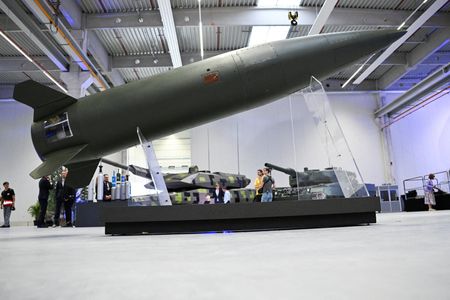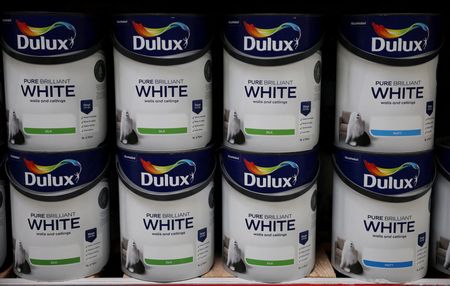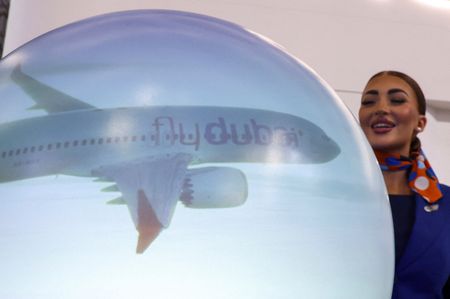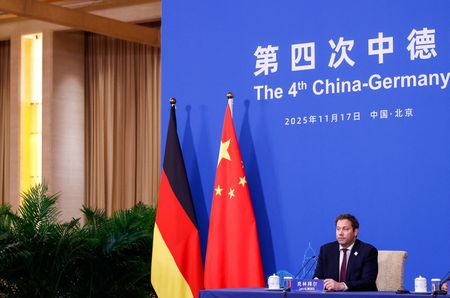By Miranda Murray and Matthias Inverardi
BERLIN (Reuters) -Rheinmetall, whose fortunes have surged amid Europe’s renewed interest in defence, aims to quintuple sales by the start of the next decade, the German company said on Tuesday.
The group guided for sales of about 50 billion euros ($58 billion), or five times its 2024 revenue of 9.8 billion euros, and an operating margin of more than 20% by 2030, during a presentation for its Capital Markets Day.
Rheinmetall was the main gainer on Germany’s blue-chip DAX benchmark index, with shares up 3.6% by 0930 GMT.
WEAPONS, VEHICLES TO MAKE UP BULK OF 2030 SALES
Its weapon and ammunition division will make up the bulk of 2030 sales, fuelled by high NATO inventory requirements and an undersupplied market, as well as its vehicle systems segment, with Germany as the driving customer, it said.
Rheinmetall, which wants to be a global champion, expects continued demand from European governments motivated by Russia’s war in Ukraine, in particular from its home market, Germany.
Rheinmetall also announced a new structure from next year, including a new naval segment that it said has a 2030 sales potential of 5 billion euros.
It is doing away with its loss-making civilian power systems division, which it plans to sell off by the first half of next year.
Rheinmetall, which said on Tuesday it plans to grow through M&A activity in the coming years, recently announced the takeover of the Luerssen Group’s warship division, NVL.
CEO Armin Papperger said in his presentation that he hoped the naval division would be ready in January.
DRONE ATTACKS IN EUROPE ALSO HELP DRIVE BUSINESS
The other new divisions include Air Defence, showing the company’s increased focus on drones, as well as Digital.
“The drone attacks that we see are a driver for the business that we have,” he added. “And the capability gap that all the nations have in Europe is huge so that we have a massive business.”
The firm, which estimates the costs for protecting Germany’s nearly 2,000 critical infrastructure facilities at 81 billion euros, put 2030 air defence sales potential at 3 billion to 4 billion euros.
($1=0.8619 euros)
(Reporting by Miranda Murray and Matthias Inverardi, Editing by Madeline Chambers, Thomas Seythal and Clarence Fernandez)











